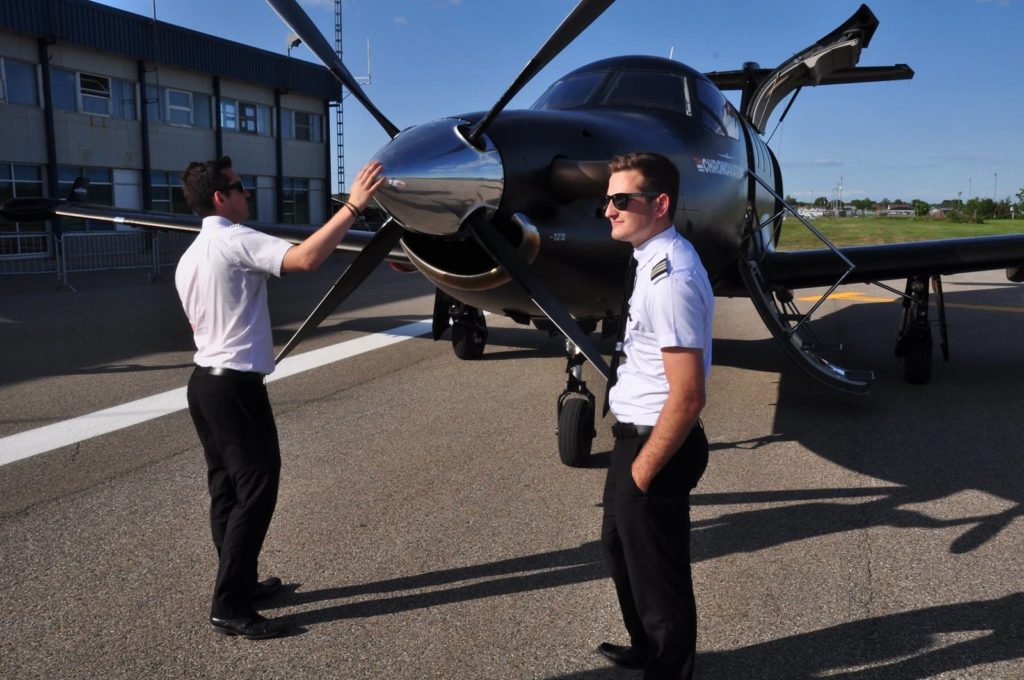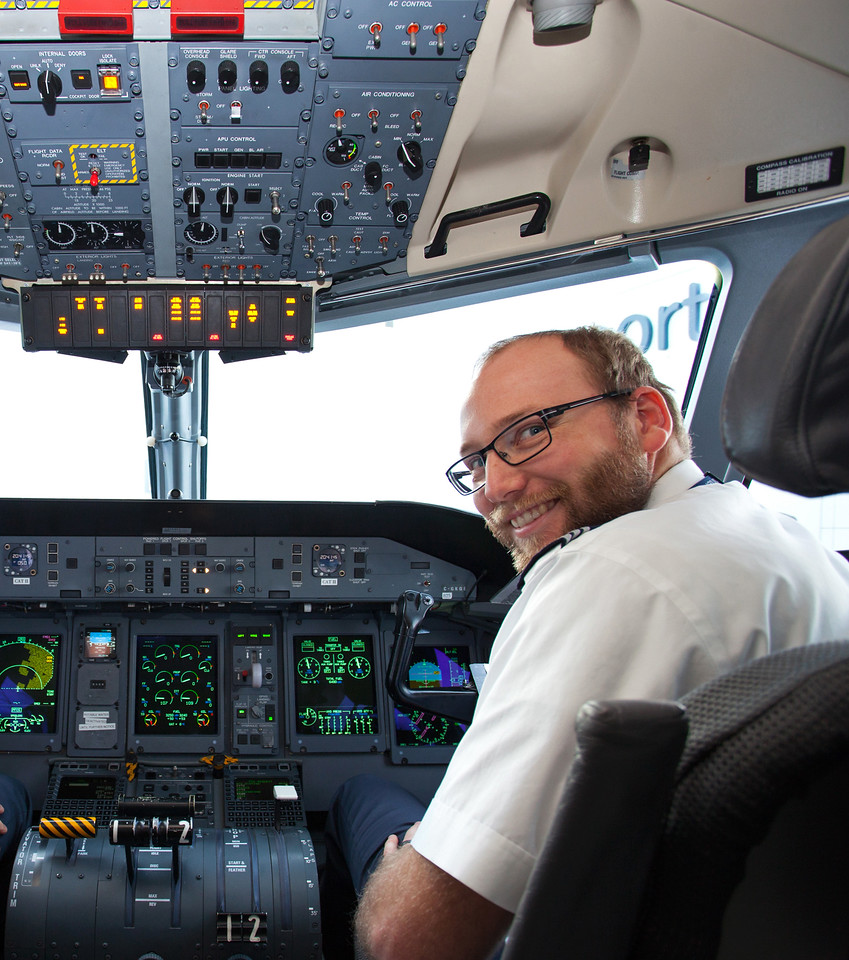Estimated reading time 12 minutes, 10 seconds.
It’s been eight days since Transport Canada unveiled its new flight and duty time regulations on Dec. 12, 2018.
Some industry organizations were quick to react to the news.

The Transportation Safety Board of Canada applauded the announcement, noting it has identified fatigue as a contributing factor or a risk in at least 34 aviation occurrences since the early 1990s. In October 2018, the agency added fatigue management to its Watchlist 2018, a collection of the most pressing issues impacting transportation safety.
Another supporter of the new regulations is the Air Line Pilots Association, International (ALPA).
“While the regulations announced today do not address all of our concerns and recommendations, they are a significant improvement over the current rules and will improve aviation safety,” commented Capt Dan Adamus, president of ALPA Canada.
That reaction was in stark contrast to the Air Canada Pilots Association (ACPA), which said it is disappointed the government has moved forward with what it called “substandard” fatigue rules.
“To say that we are profoundly disappointed is an understatement,” said Capt Matt Hogan, chair of the ACPA Master Elected Council. “These substandard rules leave a two-hour gap between the maximum flight time for Canadian pilots flying at night, compared to what’s recommended by NASA’s Ames Research Centre, and two and a half hours longer than what U.S. pilots are allowed to fly.”
ACPA is not the only industry association that is unhappy with the new regulations. Some who represent smaller operators say that when the new laws come into force, they will translate into service cuts and may even force some companies out of business.
“We are very disappointed with the new regulations, but we are going to concentrate our efforts on helping our members comply with them,” said John McKenna, president of the Air Transport Association of Canada (ATAC). “We will work with the regulator as much as possible to find workable solutions to the many issues presented by these regulations.”
Most Canadian aviation associations united early in the regulatory process to fight against what they called a “one size fits all” approach to flight and duty time revisions.
“The regulations are a catastrophe for our industry segment,” confirmed Fred Jones, president of the Helicopter Association of Canada (HAC). “For helicopter operators, it represents a radical departure from the status quo on virtually every level of the negotiations.”
HAC–which speaks for 140 operators who collectively represent more than 80 per cent of commercial helicopters flying in Canada today–has long been opposed to prescriptive flight and duty time regulations that do not contemplate the inherent differences between unique segments of the aviation industry.
“My phone has been ringing off the hook since we circulated the regs,” added Jones. He explained that while the new regulations are not applicable to [Canadian Aviation Regulations (CARs)] 702 aerial work operations, a category which accounts for a great deal of helicopter activity, most operators still “flip flop” between aerial work and passenger carrying–sometimes many times in the same day.
“Passenger work will be subject to the new rules, but utility ops will not. Problem is, you can’t change out a [remote] pilot, so while they are in the field they will be subject to the more restrictive regulations.”
Many of HAC’s members are seasonal operations that “make hay for four months a year” and are often conducting deployed operations in isolated locations, some of which could take three travel days to access.
The new regs reduce the permitted length of a work tour from the current 42 days (which Jones admits is a high number in need of adjustment) to just 17 days. When travel days are subtracted from that ceiling, he said in many cases there are just two weeks left to work productively on the job site.
What’s more, pilots will need 36 hours of time off in every seven days while in camp-which means that the customer will need to down-tool for a day each week, unless there is a second pilot available onsite.
“The two-week tour has now become the biggest problem, because to rotate crews in and out of remote sites every two weeks is insanity.”

Another issue that is top of mind for Jones is the omission of the so-called “zeroing” principle.
Currently, if a pilot is given five days off in a row, it zeroes their accumulated flight time and gives them a fresh start. This was a principle that Jones said was proven during the flight and duty time working group, and supported by the fatigue scientist hired by Transport Canada.
“That was erased completely from the new regs–it doesn’t exist anymore,” he said. “That is one of those points strongly supported by the science. When you consider the distances in our industry and that flight crews want to spend time with their families, I would argue that pilots like to work straight stretches and then take extended periods of time off.
“Legally, under existing rules, you could give pilots time off while in camp. But nobody wants to do that.”
Making a special case
For operators who feel unable to comply with the new prescriptive flight and duty time regulations as they are written, the new legislation offers another option in the form of a Fatigue Risk Management System (FRMS).
According to the new regulations, this is a plan developed by operators that will allow them “the flexibility to set flight hours based on their unique operations if they can demonstrate that alertness and safety will not be affected.”
Jones said that while Transport Canada indicated it would be open to an FRMS proposal on “zeroing,” he is worried that developing a viable FRMS will be too complicated, costly and time consuming for small operators.
“You will first have to build the science for it, test the theory, develop some methodology, and test fatigue levels using some sort of approved tool. There will be a big price tag attached to developing an FRMS–unless Transport Canada is prepared to consider an FRMS that is scalable to the size and complexity of the operator. That is something they have been unable to do for Safety Management Systems (SMS) for 15 years.”
While the helicopter industry will have four years to prepare for implementation of the new flight and duty time regulations, Jones pointed out the situation will be further exacerbated by the current pilot shortage.
“We can’t get experienced pilots to operate our aircraft in today’s regulatory environment; when these regulations come into force, it will be an even bigger challenge.”
So how is HAC moving forward?
Jones said the final version of the regulations published in Gazette II are, in some instances, more conservative than those outlined in Gazette I.
“Nobody had a chance to comment on those changes,” he said. “So the first line of defence in my view is to attack the existing regs as published. The second line of defence would be an exemption. Then, if we need to, HAC will create an FRMS framework for our operators–we would have no option at that point.”
As written, the regulations will cause significant hardship for small helicopter and fixed-wing operators serving northern, remote and Indigenous communities, Jones predicted.
“There’s no doubt about it: These regs will translate into service cuts. They will affect the viability of many small helicopter operators in Canada.
“We need to get together with Transport Canada and come up with a plan, so we’ll be ready in four years.”
FRMS: The jury is out
Over at the Canadian Business Aviation Association (CBAA), president Anthony Norejko is also focused on the “four-year runway” leading up to implementation of the new regulations for his 704 (commuter) and 703 (air taxi) operator members.
However, he pointed out that the very existence of distinct operator categories in the CARs is an acknowledgement of their differences.
“Our lens is that one size doesn’t fit all,” Norejko told Skies. “While we support safety as a best practice, the CARs demonstrates there are different sectors in the aviation industry. It’s been a huge investment of time and dollars to address this in the regulatory process. There has been a lack of recognition to the nuances our different operators face.”

He, too, believes it will be challenging for individual operators to develop their own FRMS framework.
“We have the choice of prescriptive regulations or FRMS. I think the FRMS process will be rather challenging. It’s an unknown; it remains to be seen how effective it will be.”
Similar to HAC, Norejko said CBAA will collaborate with its members to leverage best practices and perhaps draft a common FRMS template.
“One of the initiatives we’re looking at is how do we partner with and bring scale to all our operators, whether a large 704-style management company, or a smaller operator? We will look at how to simplify the FRMS process; that means pooling our data together and investigating technology we might employ.
“Perhaps the association can single-source an agreement with an FRMS provider, so that we can work with a common template and database.”
Norejko said he appreciates that Transport Canada seems to be taking a collaborative approach under the leadership of Nicholas Robinson and François Collins.
But he also said the CBAA’s mandate and mission is to promote and simplify business aviation operations-and the FRMS process has the potential to complicate things even more.








